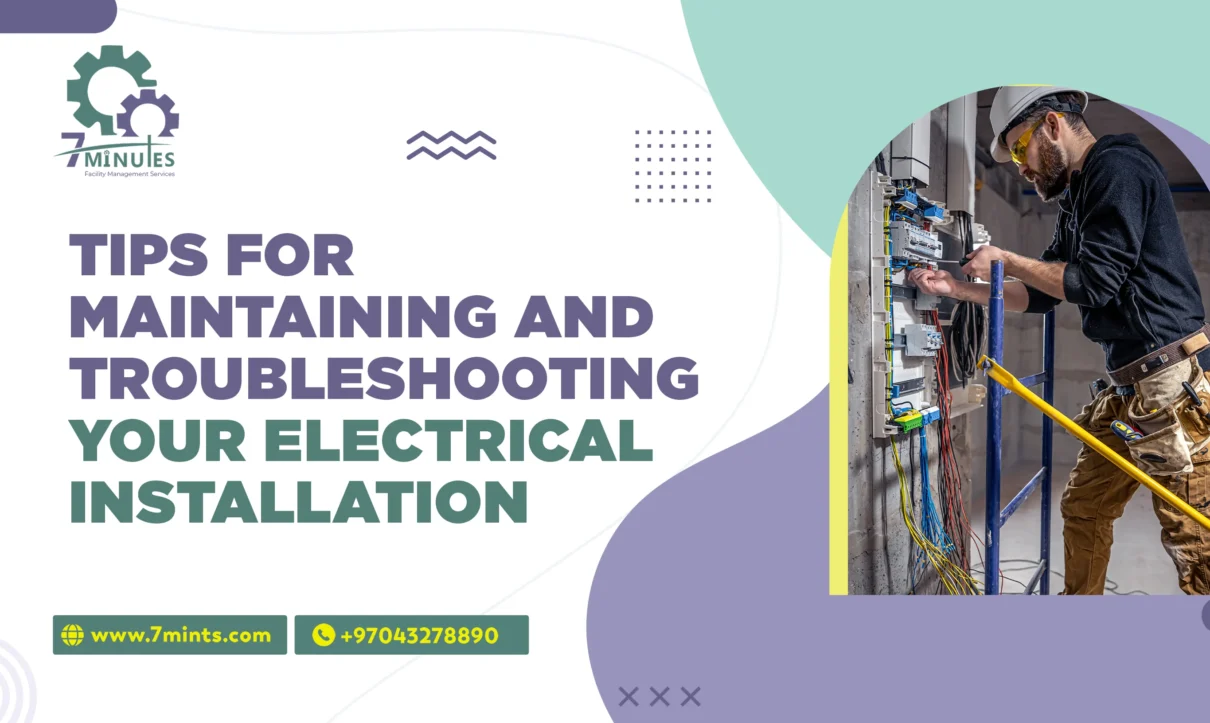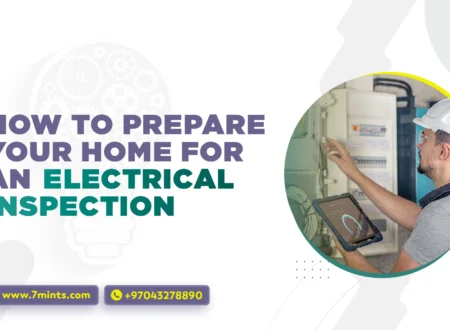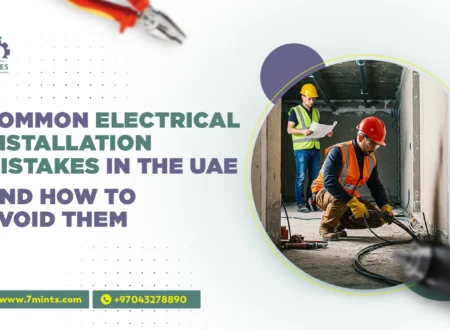The electrical installation of a home is the backbone that ensures comfort and safety. These need to be maintained properly and worked upon for troubleshooting in case of any emergency so as to save one’s life and pocket and ensure smooth functioning of one’s day. Whether the party is a homeowner or a renter, looking after one’s electrical installation is paramount for the sake of tranquility and convenience on a daily basis.
Regular Inspection of Cables and Sockets
Something as simple as regular inspection can identify a problem at its early stage, which can then grow into a serious hazard.
Check for Signs of Wear and Damage
Examine all visible wires and sockets for cracks, frayed insulation, discoloration, etc. Damaged cables can cause short circuits, sparks, and sometimes fires. In case you notice any exposed wires or a broken socket, replace it immediately or call a professional electrician. Regular checks will keep the system safe and reliable, thus protecting your home and loved ones.
Check for Overheating
Make a point of feeling sockets and cables-that should never be an option-to check if they are warmer than usual. Heat is mostly generated in cases of overloading, loose connections, and sometimes faulty wiring. If you find an outlet and that outlet is hot to touch, immediately disconnect all the appliances and also avoid using that socket until a thorough inspection is carried out on it. In fact, continued ignoring of overheating outlets may end up in melted wires, damaged appliances, and, in extreme cases, electrical fires.
Test Your Sockets
Testing said sockets is to make sure that outlets work correctly and safely. Damaged sockets can destroy your appliances, cause power surges, or even shock you. An evaluation in the testing will let you know of a reversed polarity or lack of grounding, so you can fix those problems before anything bad happens.
Listen and Smell Danger
Buzzing, crackling, and burning sounds that come from outlets or switches are sure signs to be wary of. They mean the presence of electrical arcing, loose wiring, or the inceptive heating. Never hesitate to cut the power to outlets and switches and call for an electrician the moment such sounds appear to preclude further damage or danger to life.
Do Not Overload Circuits
Overloaded circuits will melt down wires, trip breakers, or even set fires. A little bit of common sense will go a long way to seeing that everything is safe and working efficiently.
Distribute Appliances Evenly
Do not plug all heavy appliances like heaters, microwaves, or air conditioners into one outlet or power strip. Spread them out on a few circuits so as not to have a heavy load on one. This will redound to reduced chances of overheating while at the same time making sure the appliances get enough power to run correctly.
Use Surge-Protected Extensions
In these kinds of extension cords and power strips, consider only those that have built-in surge protection. They protect your electronics from sudden spikes in voltage that may come about during stormy weather or because of power outages. When used appropriately, they give a great chance to prevent fires caused by overloaded cords.
Know Your Circuit Limits
Every circuit in your residence has a maximum amount of load it can carry, which is usually measured by amps. Check the breaker panel or consult with a good electrician to see what your circuit limits are. Do not plug in any more devices than what the circuit is rated for because it would trip breakers or overheat wires.
Unplug Devices Not in Use
Unplugging unused appliances reduces the load on our circuits and saves energy. It also avoids power drain by phantom power, which can hugely add up on our electricity bills. This simple act maintains good working of the system and extends the lifespan of our electronics.
Check and Maintain Protective Devices
Your first line of defense against electrical problems is a fuse or circuit breaker. They have to be kept well in order to ensure safety.
Test Circuit Breakers
Hit the test button on your breakers regularly; it causes them to trip and hence ensures that they are blown Fuses. Immediately, they will operate in an emergency to cut off power and prevent shocks or fires. If a breaker does not trip properly, have it replaced by a professional. Check out our latest blog post on Electrical Installations: Which Type Fits Your Needs?
Replace Blown Fuses Immediately
If a fuse blows, replace it immediately with the correct type and rating. Don’t ever use a higher-rated fuse than what is recommended because, in so doing, you may allow too much current to flow through and damage your wiring. Have spare fuses on hand to be able to replace them at once.
Label Your Electrical Panel
Clearly label every breaker or fuse in your panel so that you know which circuit controls a particular area of your home. This makes it easier to turn off the power in an emergency.
Panel Should Be Accessible
Do not obstruct your electrical panel with furniture or storage. Quick access is vital during an emergency that calls for power to be shut off or for any maintenance to be done on the panel. A clear path to the panel might just save your life in a crisis.
Four Common Electrical Problems
There are plenty of simple electrical problems to troubleshoot on your own, which can save you time, money, and stress.
The lights are Flickering
Flickering lights are looking to test your patience. The first thing you should check is a loose bulb or a bulb that needs replacing. Once that is ruled out, the next thing to check for is a switch that is faulty or loose wiring. In cases where a flickering light is experienced across various fixtures in the house, the issue could be with the electrical system itself-causing fluctuations in voltage or a bad connection. This is when you want to engage a professional to check your wiring and connections for you.
Circuit Breakers That Trip
When a breaker trips, unplug all devices on that circuit and reset the breaker. Once reset, should it trip again immediately, you might have a short or overloaded circuit. Reconnect the devices slowly to find the cause.
Dead Outlets and Switches
If an outlet or switch stops working, check your breaker panel for a tripped breaker or a blown fuse; if not, it could be a loose wire or a faulty device. Do not attempt to open outlets or switches to make repairs unless you know what you are doing; call a licensed electrician to properly diagnose and repair.
Open Circuits
Open circuits are basically interruptions in a wiring setup that prevent current from flowing in the circuit. One would check all parts of the circuit with a multimeter for continuity. A silent meter or OL on the screen signifies that the break has been pointed out. From that point, the broken wire or broken component needs to be fixed or changed in order to get current flowing again.
Conclusion
Proper electrical installation is really the foundation of a safe and comfortable home. Inspect it occasionally; use it properly, and respond quickly to issues, and you could avert accidents and heavy repairs. If in doubt or faced with a complicated situation, always go for a professional electrician. Need help with your electrical system? Give us a call today and schedule maintenance and troubleshooting with a splash of knowledge!









